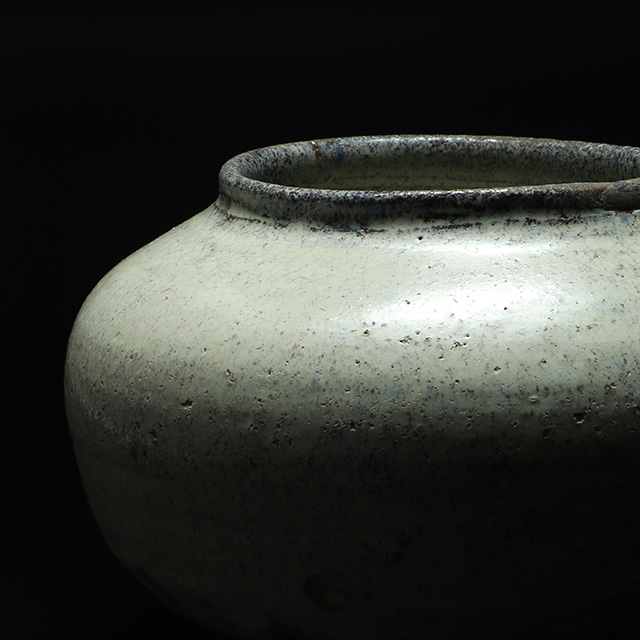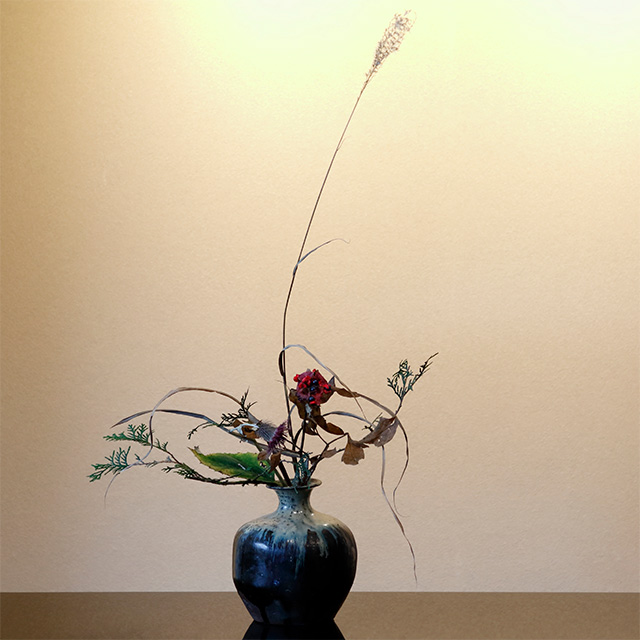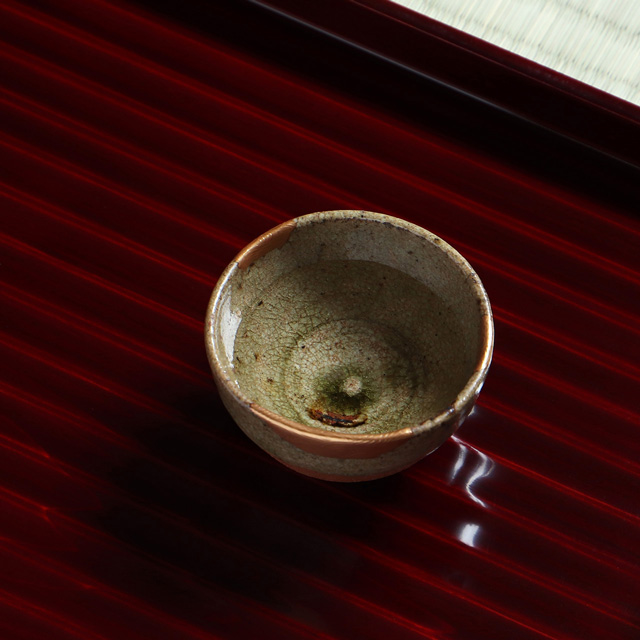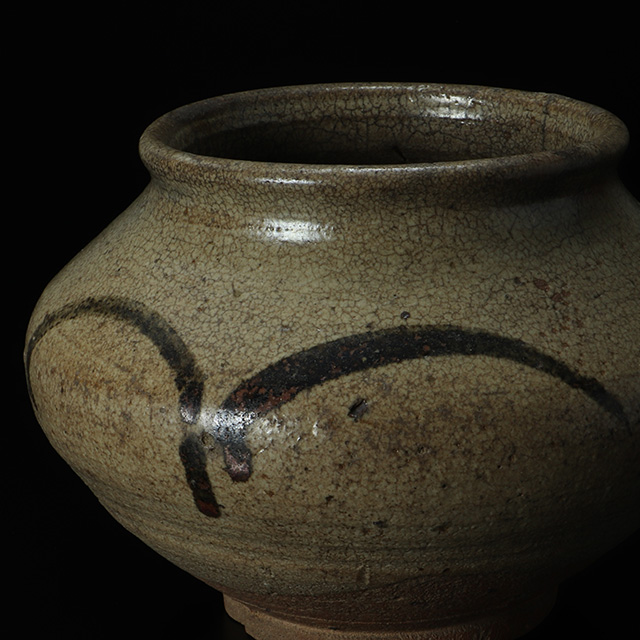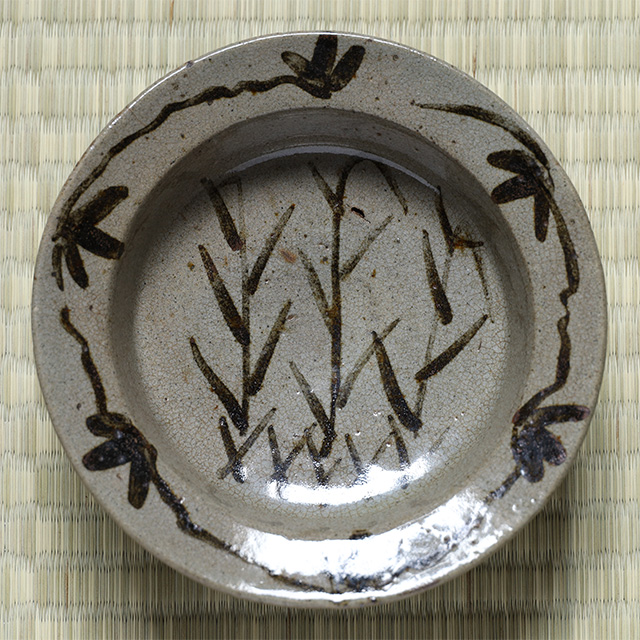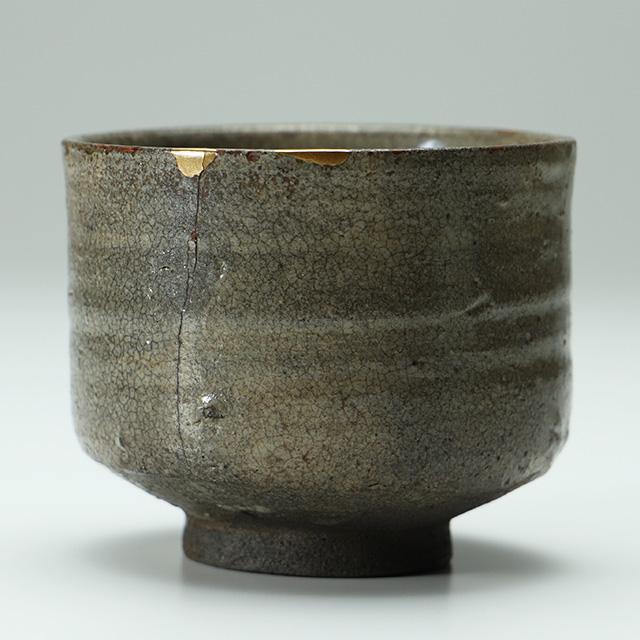Old-Karatsu
古唐津

https://tenpyodo.com/en/product1/cat/karatsu/(Handled Items ⇒ Old-Karatsu)
Old-Karatsu
Karatsu ware is pottery fired in the hizen region, centered around the karatsu domain in hizen country. The name originates from the fact that it was shipped from karatsu port, and it is highly regarded as a tea pottery, as it is praised as “Raku ware being the most wonderful, Hagi ware being second, and Karatsu ware being third.” It is estimated that around the end of the 16th century, in the kitahata district, karatsu city in the northern part of saga prefecture, Chikashi Mikawanokami Hata, the lord of kishidake castle invited potters from korea and opened a kiln. There are ancient kiln sites from the early days of karatsu ware scattered around the kishidake castle. In 1593(Bunroku 2), when the hata clan lost their territory due to Hideyoshi toyotomi’s anger, the potters of kishidake dispersed throughout hizen. After that, Hirotaka Shimanokami Terazawa took over the territory and established the hizen country karatsu domain.The confiscation of Hata’s territory and the closure of the kishidake kilns is one of the pieces of evidence that old-karatsu was being fired before 1593(Bunroku 2). The beginning of karatsu ware is estimated to be around the tensho era(1573-92)based on excavations and research. Karatsu ware experienced a prosperous period during the momoyama period to the early edo period, producing many simple and excellent works by the potters who were invited during the Bunroku-Keicho campaigns(1592-98). During the bunroku campaign, when hideyoshi toyotomi set up camp at nagoya castle, Oribe Furuta also stayed for about a year and a half from 1592(Bunroku 1)and is said to have directly instructed the karatsu kilns. Furthermore, the climbing kilns were also transmitted from karatsu to mino and built at kujiri motoyashiki. The achievements brought by the introduction of korean technology to japanese pottery cannot be measured. Karatsu ware first appeared in “Oribe Furuta’s Tea Ceremony Records” as “Dish of Karatsu Ware” in 1602(Keicho 7), and is concentrated in the keicho era(1596-1615). In addition, by the middle 17th century, the notation “Old-Karatsu” was already used in tea ceremony records. While most karatsu ware was mass produced as everyday items for ordinary people, it caught the eye of tea practitioners during the momoyama period to the early edo period when making matcha became popular, and it became pottery used in the tea ceremony. Among the works, there are also custom made works ordered by tea practitioners and tea utensil merchants, which receive particularly high evaluations due to their extreme rarity compared to the overall total number. In the 17th century, a significant event occurred for karatsu ware:the discovery of izumiyama porcelain stone and the successful firing of porcelain by korean potter Yi Sam-Pyeong(japanese name:Kanagae Sanbee). The subsequent expansion of imari ware production greatly affected the decline of karatsu ware. In the early edo period, while mishima-garatsu and nisai-garatsu were appreciated, the charm of old-karatsu was lost, and only karatsu domain kiln(ochawan kiln)remained. In the early showa period, old-karatsu researchers Kyoichi Kanehara(Tohen)and Wasaburo Mizumachi and Kuichi Furutachi excavated numerous ancient karatsu kiln sites in the hizen region, providing tens of thousands of valuable pottery shard materials. The unadorned earthiness and nostalgic richness of color in karatsu ware are full of cheerfulness and vitality, representing the essence of the art created by the earth and flames.
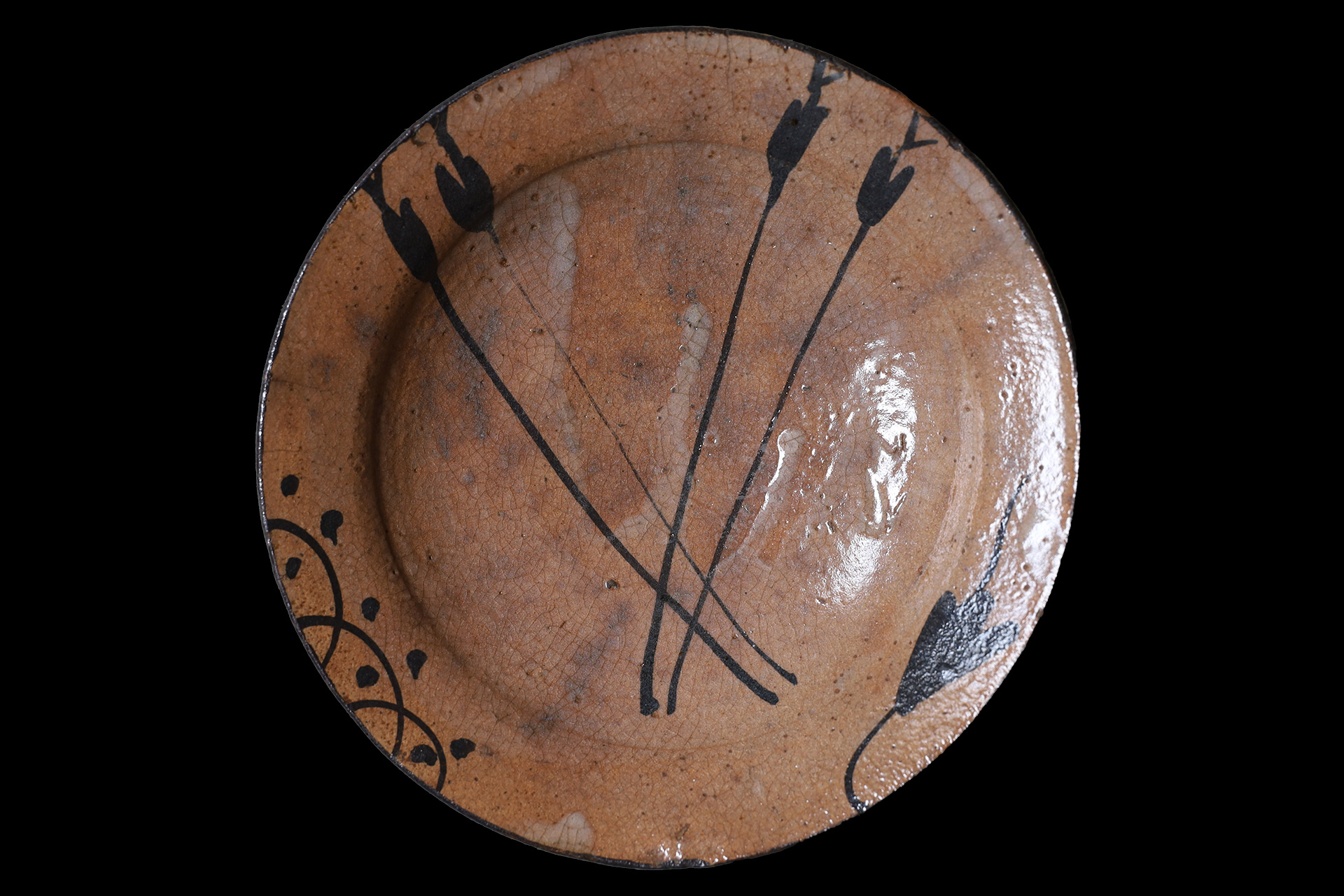
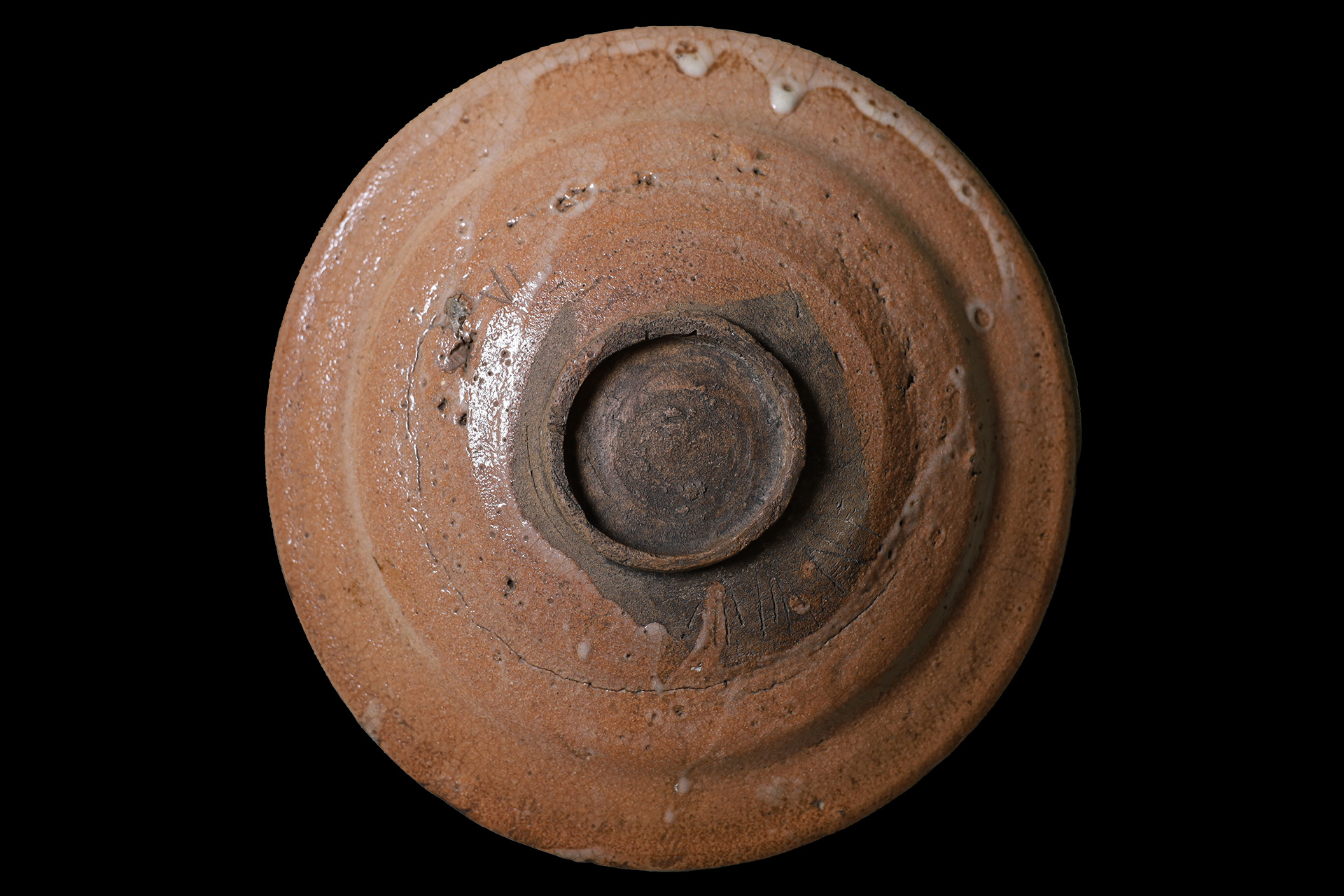
奥高麗
奥高麗は古唐津の一種で最も声価が高い大振りの茶碗であり、
井戸茶碗に並ぶとまで評されています。
高麗(朝鮮半島)の奥で焼成された物、高麗の奥から渡ってきた陶工が焼成した物等、
名称については様々な諸説がありますが、
高麗茶碗に似たところから名付けられたとするのが穏当です。
「奥高麗」という名称は江戸中期以前の茶会記には確認する事ができません。
雑器からの転用とは考え難いという見解もあり、
熊川や井戸等の高麗茶碗を手本に茶碗として焼成された物と推測されています。
市ノ瀬高麗神窯、甕屋の谷窯、道園窯、藤の川内窯、阿房谷窯、焼山窯、椎の峰窯、
川古窯の谷新窯、大草野窯、葭の元窯等で焼成されたと考えられています。
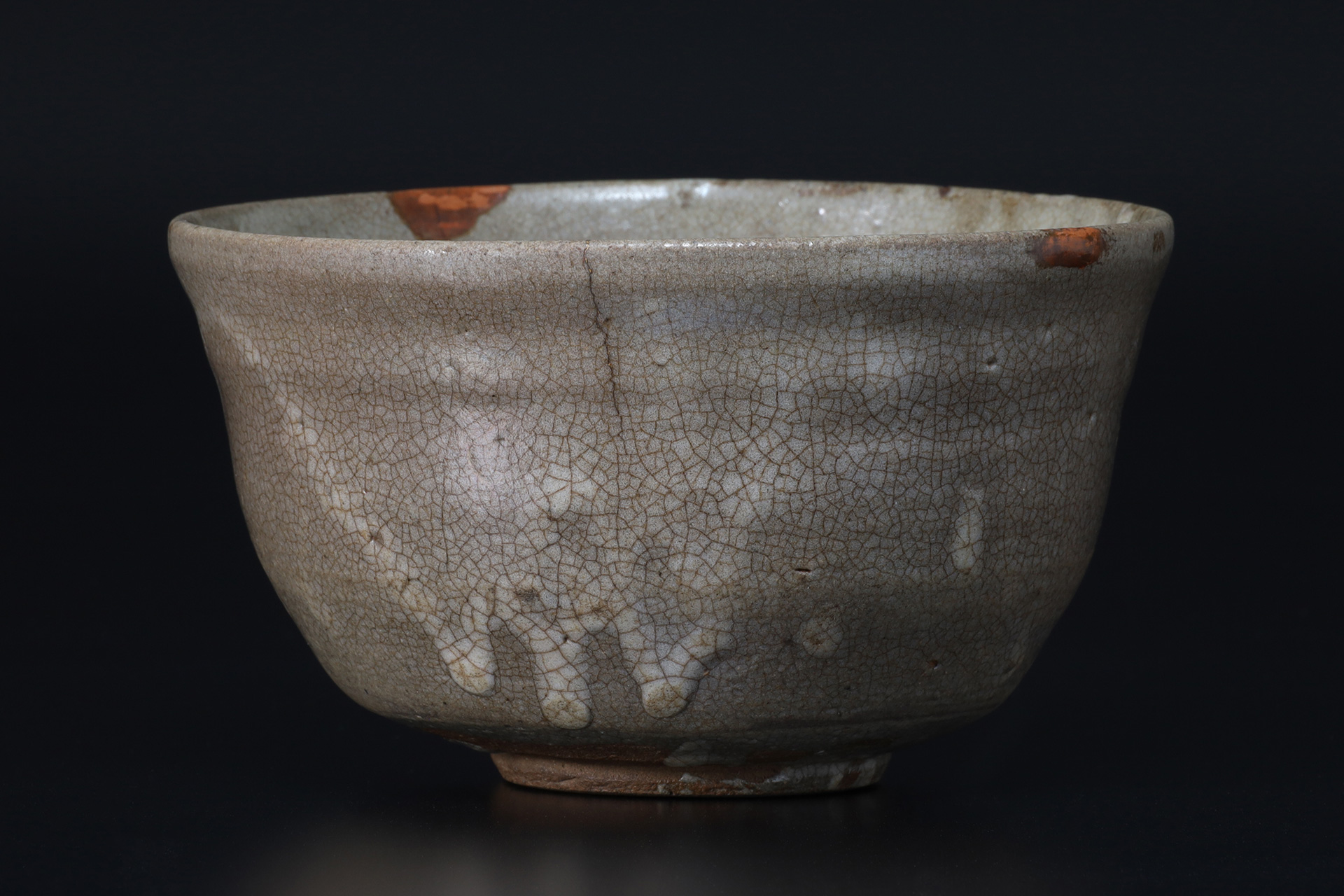
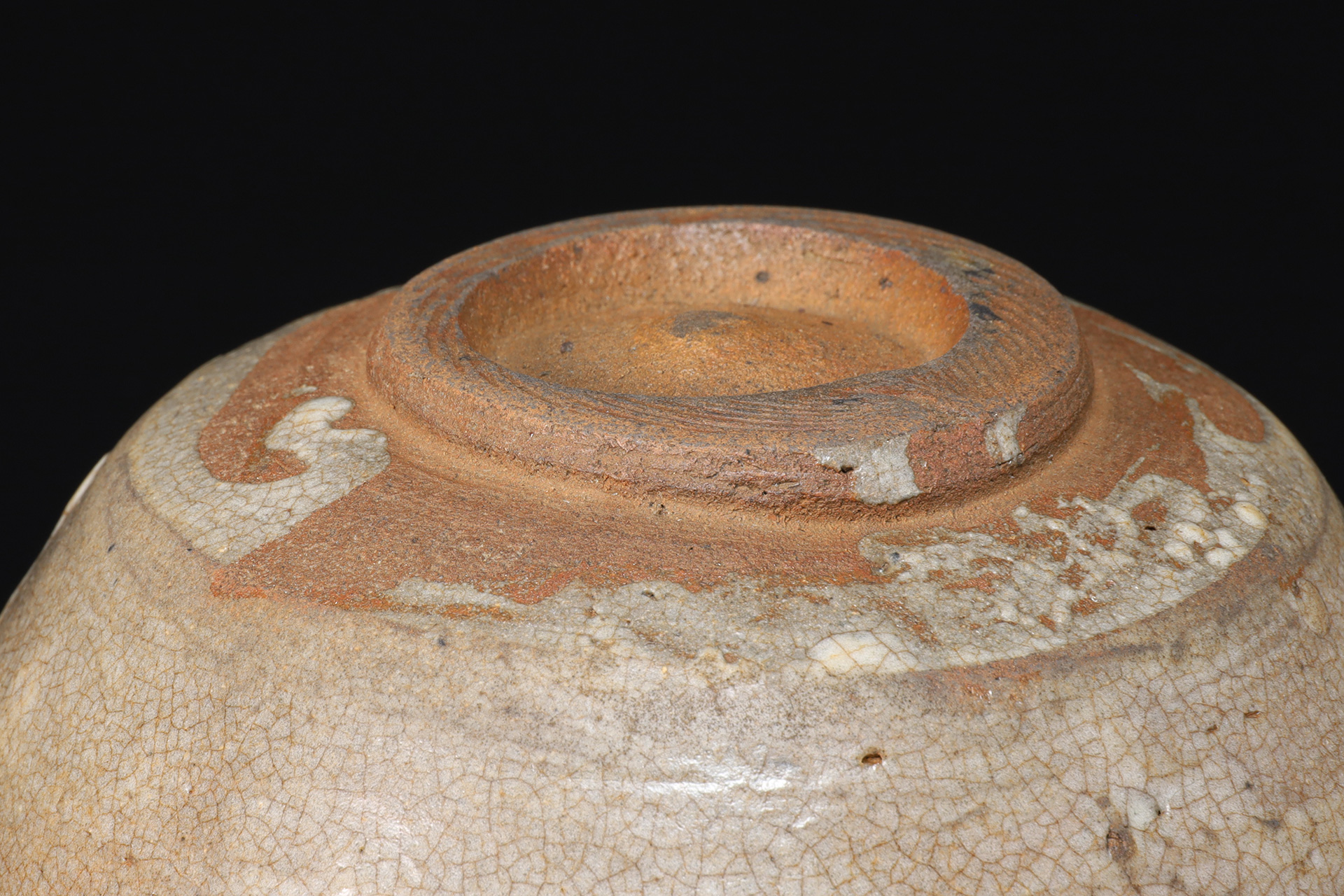
斑唐津
斑唐津とは失透性の藁灰釉が施された唐津焼です。
白濁した釉薬が変化に富んだ斑状になり、
古唐津の中でも最も古い岸岳系の窯で多用された技法として知られています。
還元焼成では乳白色の中に青みが差した物も見られ、
酸化焼成では黄ばんだ風合いとなります。
酒を注ぐと見込みが美しく映え、
中でも「斑唐津の筒盃」は酒盃の王者に相応しい貫禄を示しています。
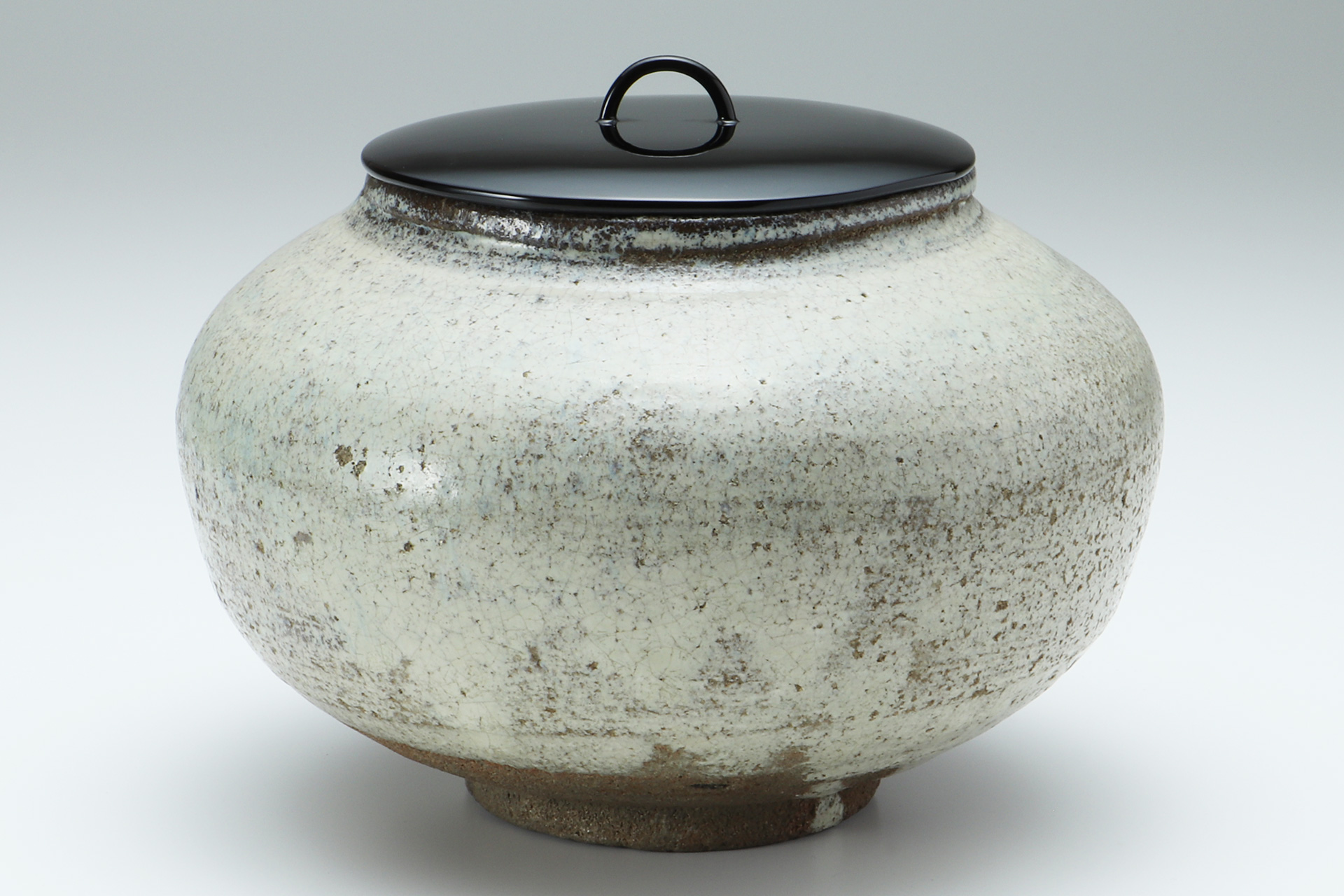
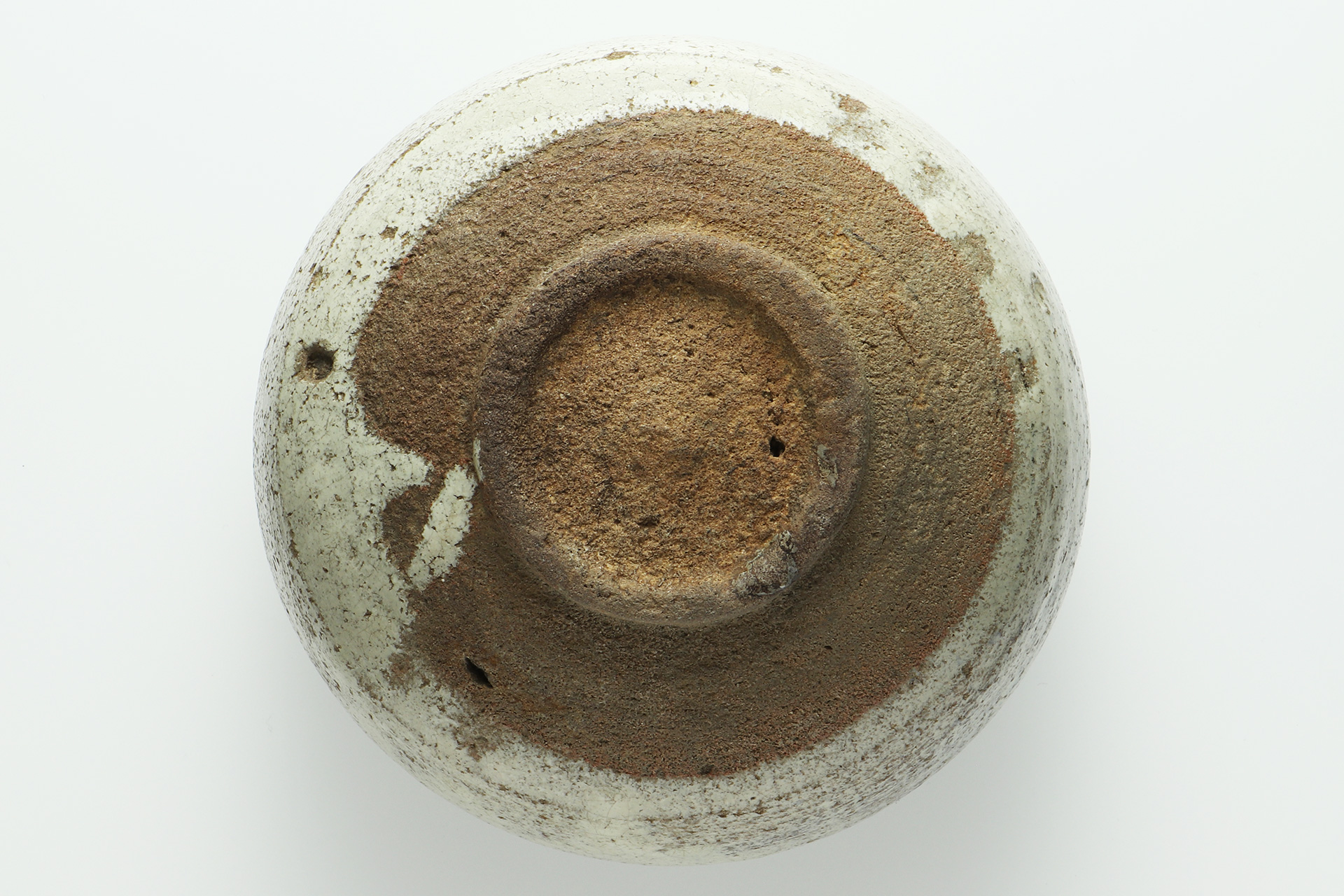
瀬戸唐津
瀬戸唐津とは長石釉が施された瀬戸風の古唐津です。
高麗茶碗の影響下に茶陶として生まれた事を示す雅味に富んだ作品が多く、「本手」と「皮鯨手」の二種に分類されます。
本手は砂気の多い白土に縮緬皺が出て、
灰白色や枇杷色を呈した長石釉に粗めの貫入が不規則に入り、豪快な梅花皮も見られます。
青井戸、蕎麦、熊川、呉器等の形があり、見込みの鏡に3~4つの目跡が残ります。
飯洞甕、帆柱、道納屋谷窯等から類似した陶片が出土しており、
阿房谷、道園、椎の峰窯等においても焼成されたと推測されています。
抹茶碗だけでなく、長崎県各所の消費地から瀬戸唐津の陶片が確認されており、
小碗、小鉢、皿等もあり、黒い油染みが残った灯明皿として使用された作例もあります。
皮鯨手は蕎麦形の本手瀬戸唐津を写したとされる平茶碗で、
鉄釉が施された口縁が鯨の皮身のように見える事によります。
見込みの鏡に3つの目跡が残り、高台内に兜布が見られます。
圧倒的に数が少ない事からも茶陶としての小規模生産だったと推測されます。
この二種は窯も時代も異なるものと推定され、茶家の間では本手の方が古いと伝えられます。
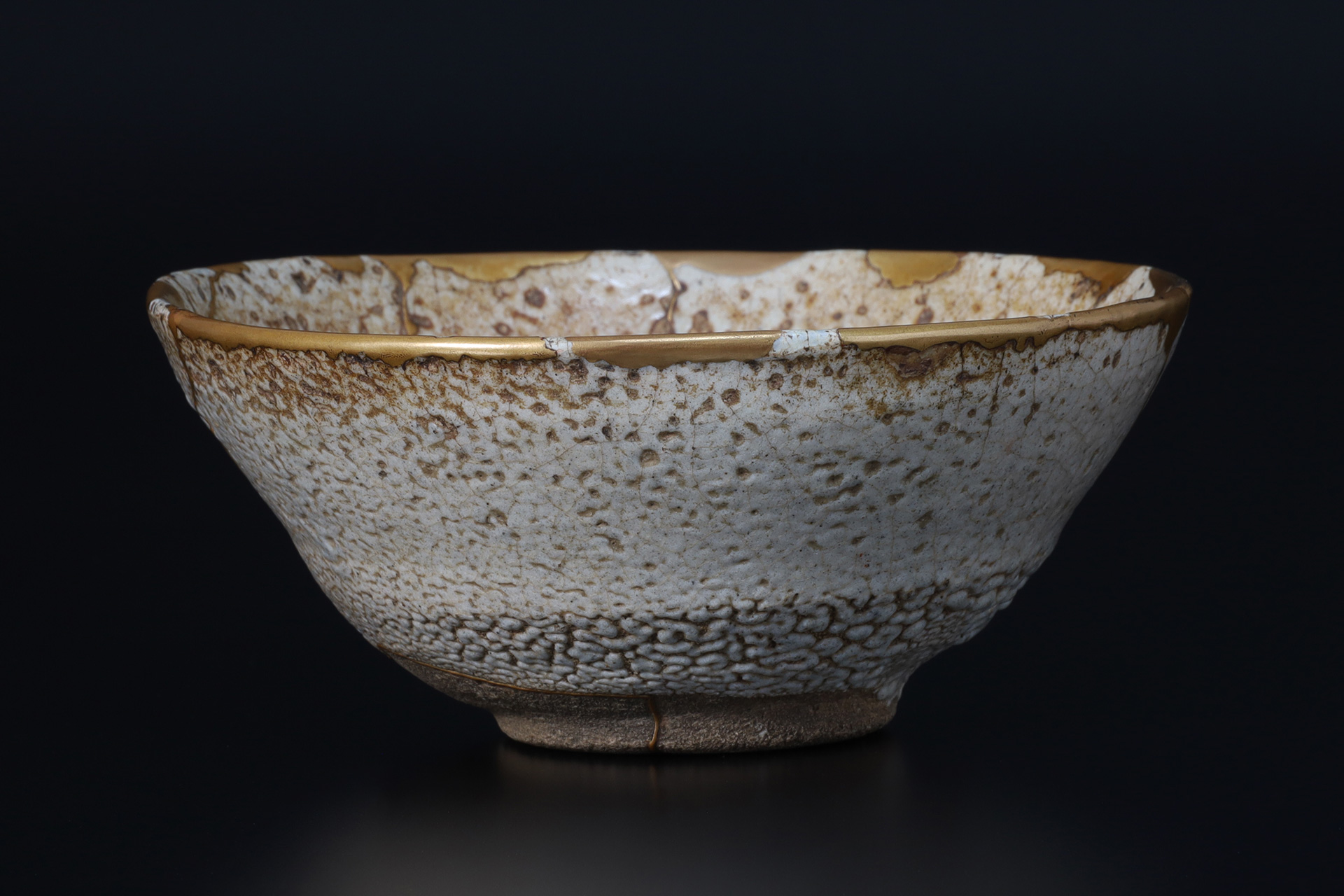
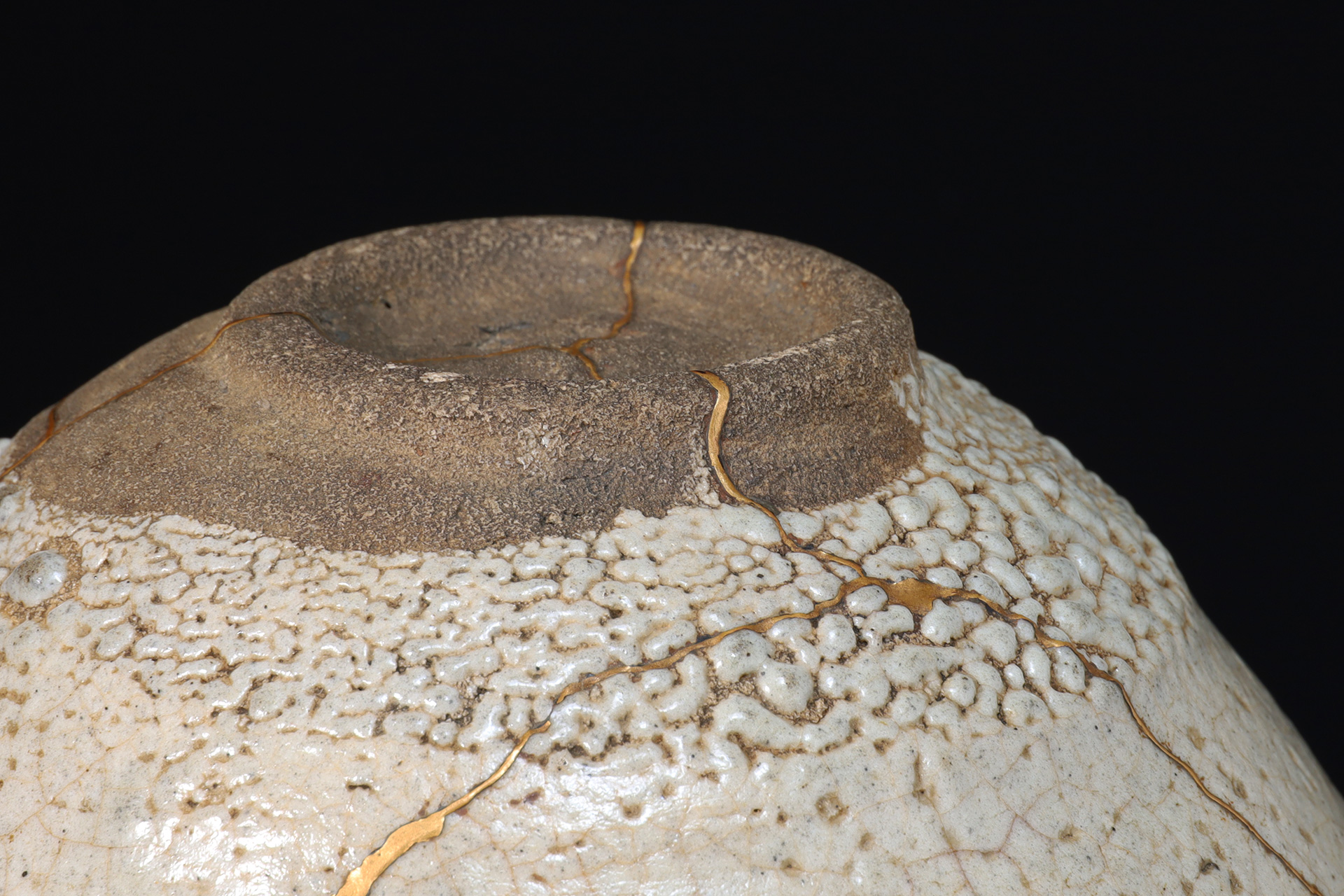
朝鮮唐津
朝鮮唐津とは鉄呈色の黒飴釉と失透性の藁灰釉を掛け合わせた唐津焼です。
黒飴釉と藁灰釉が溶け合った部分は絶妙な様相を呈した海鼠釉となり、
多くの蒐集家や茶人達を魅了し続けています。
鉄分を多く含んでいる土の性質から酸化焔で焼き上げると地肌は濃い赤褐色を呈します。
一般的に袋物は板起こしの叩き成形が行われており、
轆轤上に盤状の粘土を置いて底板とし、
粘土紐を輪状(コイル状)にして幾重にも積み上げていきます。
適当な高さにまで達したら当て板を器壁内部に当て、
ラケット状の叩き板で器壁外部を上下左右に満遍なく叩き伸ばしていく事で、
輪と輪が緊密に密着して器壁は薄く膨らみ、軽くて丈夫な器となります。
斜線文、格子文、青海波文等の刻目は土と密着しない為の工夫であり、
器形を整えると同時に内部には一種の副次的装飾が生み出されます。
最後に轆轤の水挽きで口縁を造り、底周りを削って仕上げていきます。
中には叩きを省略して轆轤で表面を均しただけの物もありますが、
こうした類は手取りが重いです。
底部はくっつきを防止する為、貝目跡になったり籾殻が塗されたりしています。
松浦系古唐津・藤の川内窯(茅ノ谷窯)が最も著名な窯場として知られています。
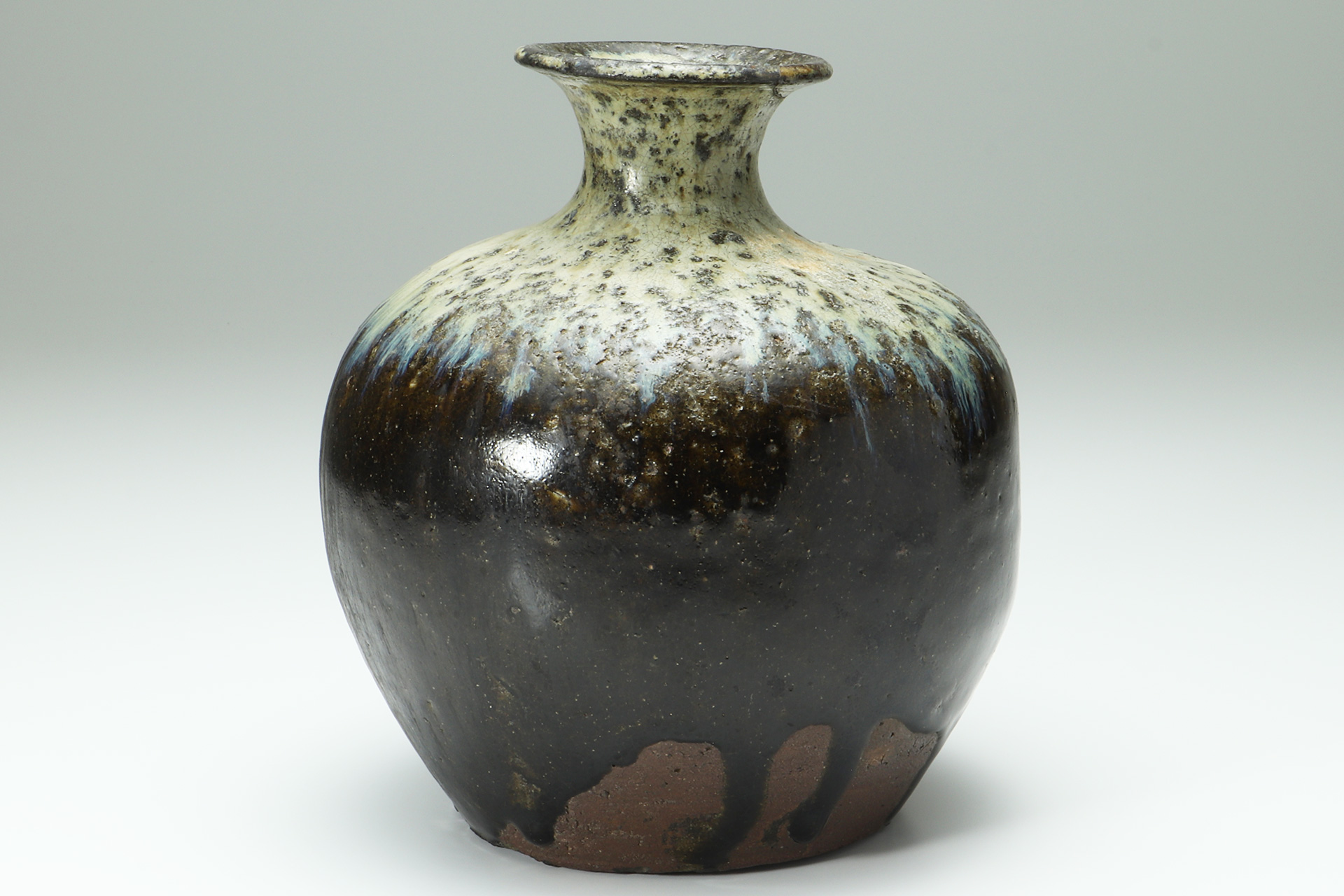
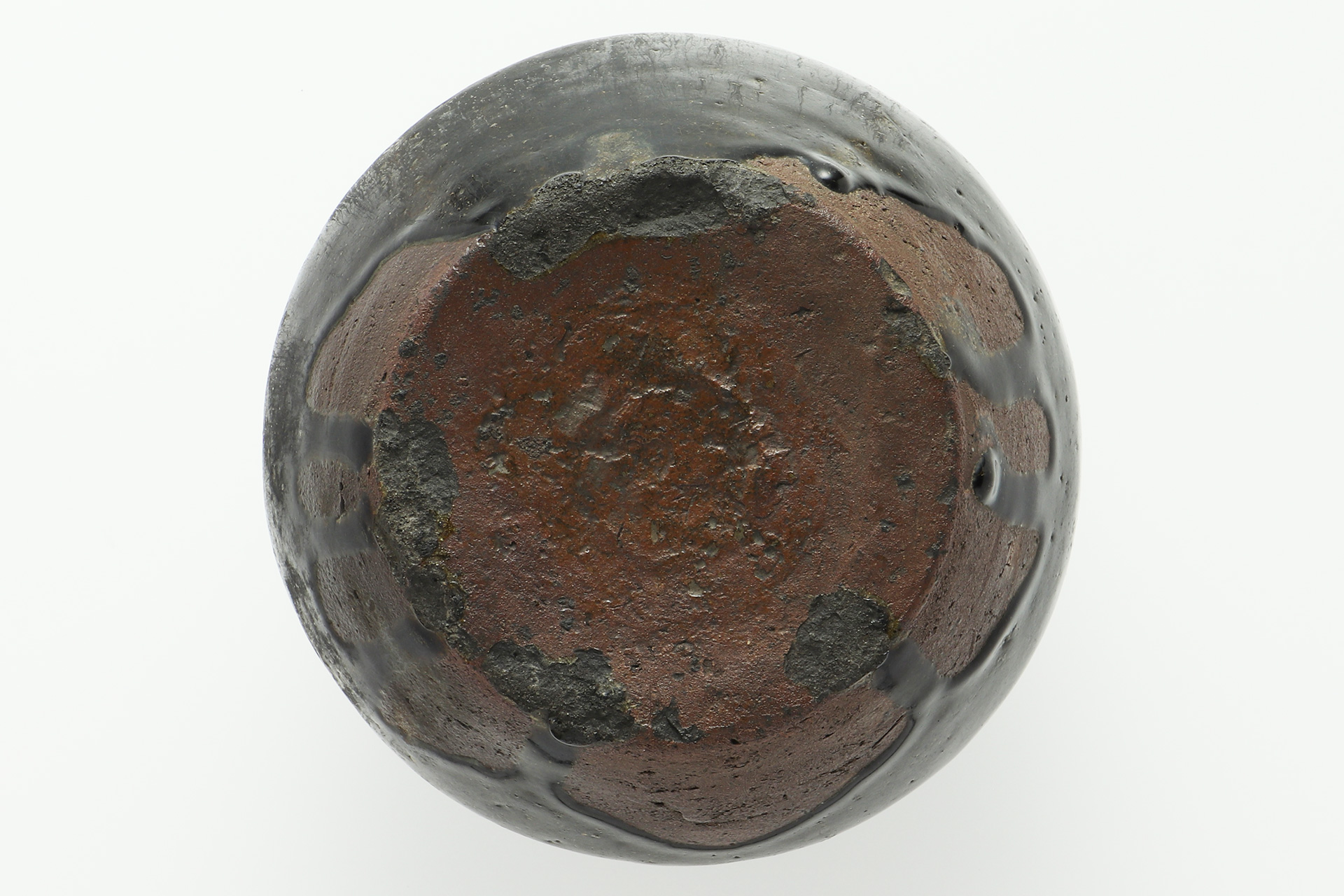
We sell and purchase Old-Karatsu
We have a physical shop in Hakata-ku, Fukuoka City, where we sell and purchase "Old-Karatsu" works. Drawing on a long career and rich experience in dealing, we promise to provide the finest service in the best interests of our customers. With the main goal of pleasing our customers, we will serve you with the utmost sincerity and responsibility until we close the deal.



